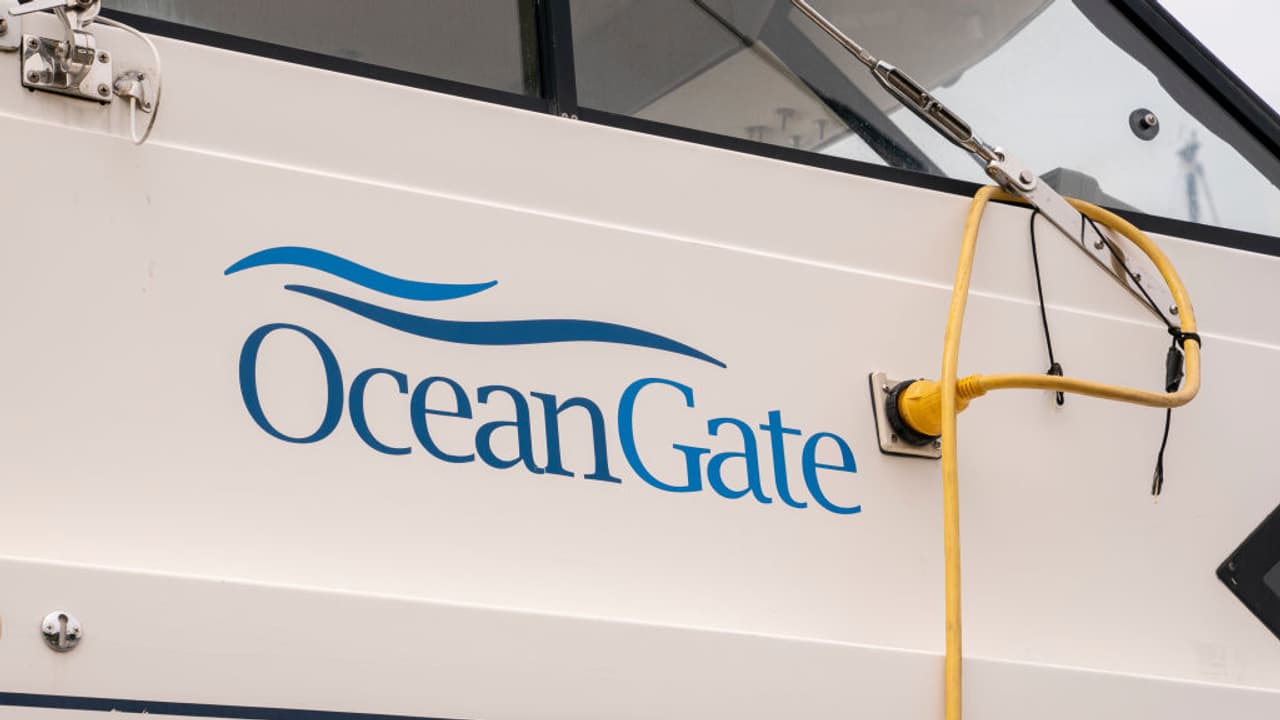CEO Stockton Rush’s actions, including bypassing regulations and ignoring warnings, were directly linked to the tragedy. The carbon fiber hull, combined with operational deficiencies and a toxic work environment, contributed to the tragedy.
WASHINGTON, DC: The catastrophic implosion of the Titan submersible in June 2023 could have been avoided, according to a damning report released by the U.S. Coast Guard. Multiple failures to follow standard safety protocol led to the deadly implosion of a private submersible visiting the Titanic wreckage in 2023, according to the final report published on Tuesday, August 5. The investigation squarely places responsibility on OceanGate CEO Stockton Rush, who perished along with four others during the deep-sea dive to the Titanic wreck site, as well as design flaws. The report, compiled by the Marine Board of Investigation, found that OceanGate repeatedly ignored serious safety concerns, operated outside established oversight frameworks, and failed to meet basic engineering and operational standards. Had Rush survived, investigators say he could have faced criminal charges. OceanGate chief executive Stockton Rush was joined on the doomed expedition by British explorer Hamish Harding, French deep-sea explorer Paul-Henri Nargeolet, Pakistani-British tycoon Shahzada Dawood and his son Suleman. Seats on the submersible cost $250,000 per person.
The Titan submersible was descending in the North Atlantic when it imploded, killing all five onboard instantly. The incident triggered a massive international search effort that gripped global attention and prompted widespread scrutiny of the private underwater tourism industry. The 335-page report said “OceanGate’s failure to follow established engineering protocols for safety, testing, and maintenance of their submersible, was the primary causal factor” for the implosion. It also accused the company of “intimidation tactics…to evade regulatory scrutiny.”
“Critically Flawed” Operations
The Coast Guard’s findings highlight what they describe as a dangerous culture within OceanGate — one that disregarded industry norms, regulatory expectations, and internal warnings. The company, based in Washington state, had significant gaps between its documented safety procedures and actual practices. Jason Neubauer, chair of the Marine Board, emphasized the broader implications of the tragedy. “This investigation underscores the urgent need for better oversight, especially for innovative ventures that fall outside existing maritime regulations,” he said.
OceanGate had a “toxic workplace environment which used firings of senior staff members and the looming threat of being fired to dissuade employees and contractors from expressing safety concerns,” the report said. Dr Salvatore Mercogliano, a maritime historian at Campbell University, noted that current laws do not clearly define who oversees private submersibles operating internationally. “Regulations often evolve in response to tragedy, and this case is no different,” he said. “Unfortunately, maritime safety often advances only after lives are lost.”
The report paints a troubling picture of internal dysfunction at OceanGate. Rush, who had a background in aerospace engineering, increasingly bypassed protocols as his ambition grew, the report concluded. His actions, the board said, were directly tied to the fatal outcome of the 2023 dive. OceanGate frequently skirted regulations by misclassifying its passengers as “mission specialists” to avoid rules applicable to commercial passenger vessels. However, testimonies revealed that these individuals were effectively tourists with no real research roles.
The report also uncovered several instances of deception:
- In 2017, Rush was warned by a Coast Guard reservist that his Titanic dive would violate U.S. laws. He reportedly replied that he would “buy a congressman” if challenged.
- In 2021, the company falsely told a U.S. federal court that Titan was registered in the Bahamas.
- Rush allegedly submitted falsified documents to the Coast Guard’s National Maritime Center, misrepresenting the sub’s specifications and his own experience.
‘Instantaneous death’
Over two miles underwater when the hull collapsed, all occupants “were exposed to approximately 4,930 pounds per square inch of water pressure,” resulting in “instantaneous death,” the report said. Two seconds later, the monitoring team on the support ship “heard a ‘bang’ emanating from the ocean’s surface, which the investigation later correlated to the Titan’s implosion.” Debris was found a few days later on the ocean floor, about 1,600 feet (500 meters) from the bow of the Titanic, and human remains were recovered when the sub was brought to the surface.
In its report, the Coast Guard said that OceanGate had continued to use Titan despite “a series of incidents that compromised the integrity of the hull and other critical components of the submersible without properly assessing or inspecting the hull.”
It also identified design flaws with the unique carbon fiber hull “that weakened the overall structural integrity.” The US Coast Guard said that the vessel was not “registered, certified, inspected, or classed” by any international flag administration or recognized organization. Last year, the family of Nargeolet sued OceanGate for $50 million, accusing the US-based company of gross negligence. Known as “Mr. Titanic,” he had visited the wreckage 37 previous times.
Shortly after the tragedy, OceanGate halted all operations. The wreckage of the Titanic sits 400 miles off the coast of Newfoundland and has become a lure for nautical experts and underwater tourists since its discovery in 1985. The ship hit an iceberg and sank in 1912 during its maiden voyage from England to New York, with 2,224 passengers and crew on board. More than 1,500 people died.
(With inputs from agencies)
